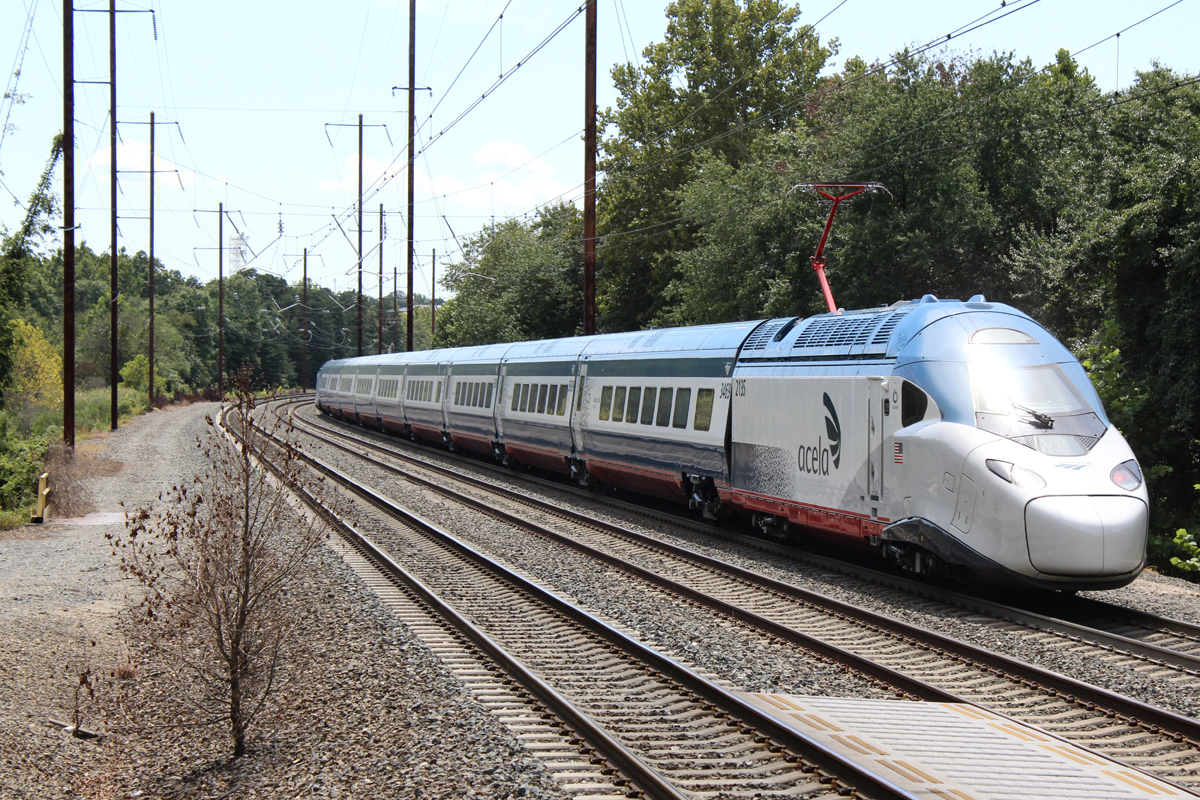
WASHINGTON — Delays principally caused by faulty door activation and slower running over what are normally the fastest portions of Amtrak’s Northeast Corridor have tempered the generally warm reception the “Next Generation” Acela trainsets received when they debuted last week. But the trainsets are now offering passengers a welcome — and long overdue — alternative to their 25-year-old predecessors and 50-year-old Amfleet workhorses.
Operating delays
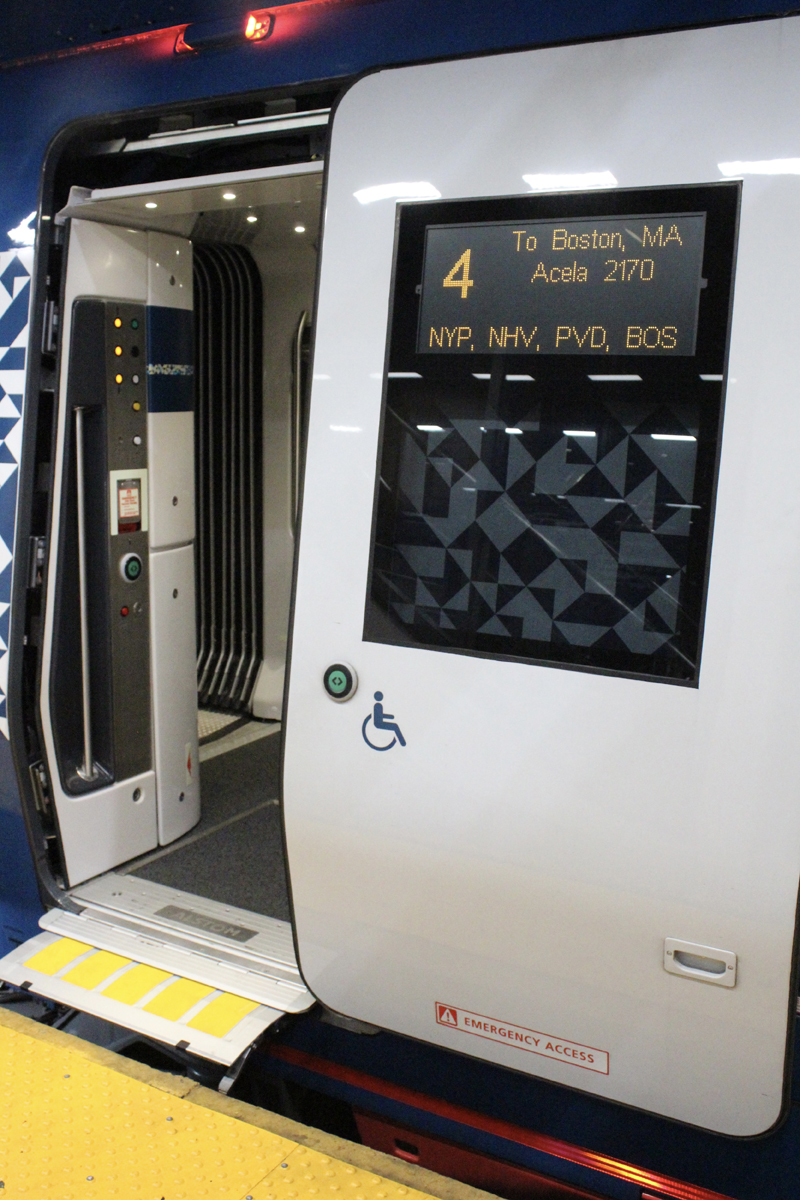
On several occasions since their debut, station dwell times lengthened when doors on the nine-car trainsets did not operate properly. The most consequential disruption reported through Amtrak’s train status app occurred Tuesday, Sept. 2, when eastbound No. 2154 experienced “an earlier mechanical assessment and a brief stoppage to resolve an issue with a mistakenly opened door.” A long pause occurred at New Haven, Conn., on that trip, resulting in a Boston arrival one hour, eight minutes late.
The same day, 43 minutes of delay to No. 2153 into Washington was attributed to “speed restrictions and a mechanical assessment,” while afternoon NextGen No. 2173 arrived 52 minutes late due to an “equipment adjustment while in transit.” Other trains since last Thursday had door malfunctions, and many seemed to lose the most time between New Haven and Providence, R.I. That segment includes short portions of track that can potentially accommodate the trainsets’ advertised 160-mph top speed, once several operating challenges are overcome [see “NextGen Acela expands capacity …,” Trains.com, Aug. 28, 2025]. On Friday, trackwork on the “New Jersey Speedway” between New Brunswick and Trenton slowed many trains.
On the other hand, with one NextGen operating in each direction Saturday and Sunday and two round on trips Labor Day Monday, seven of the eight NextGen assignments either arrived early at their final destinations or no more than 6 minutes late.
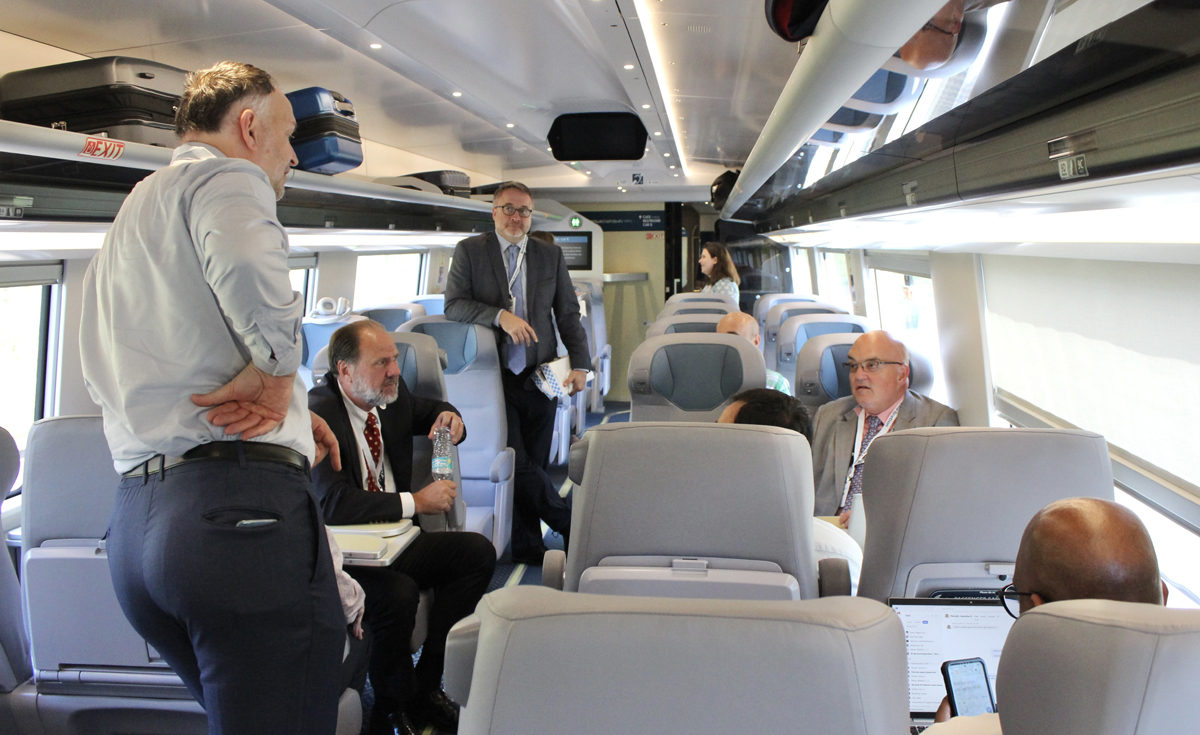
A new experience
The fact these trains are finally running — remember that at one point they were to be dubbed “Acela 21” — is a relief to all involved, even though there are numerous loose ends to tie up. The seats are a bit narrower and firmer than the original Acela or Amfleet seats. Their slight recline is achieved by the seat sliding forward. However, the shaped headrests and greater spacing that allows power and USB ports access to both occupants are a welcome addition.
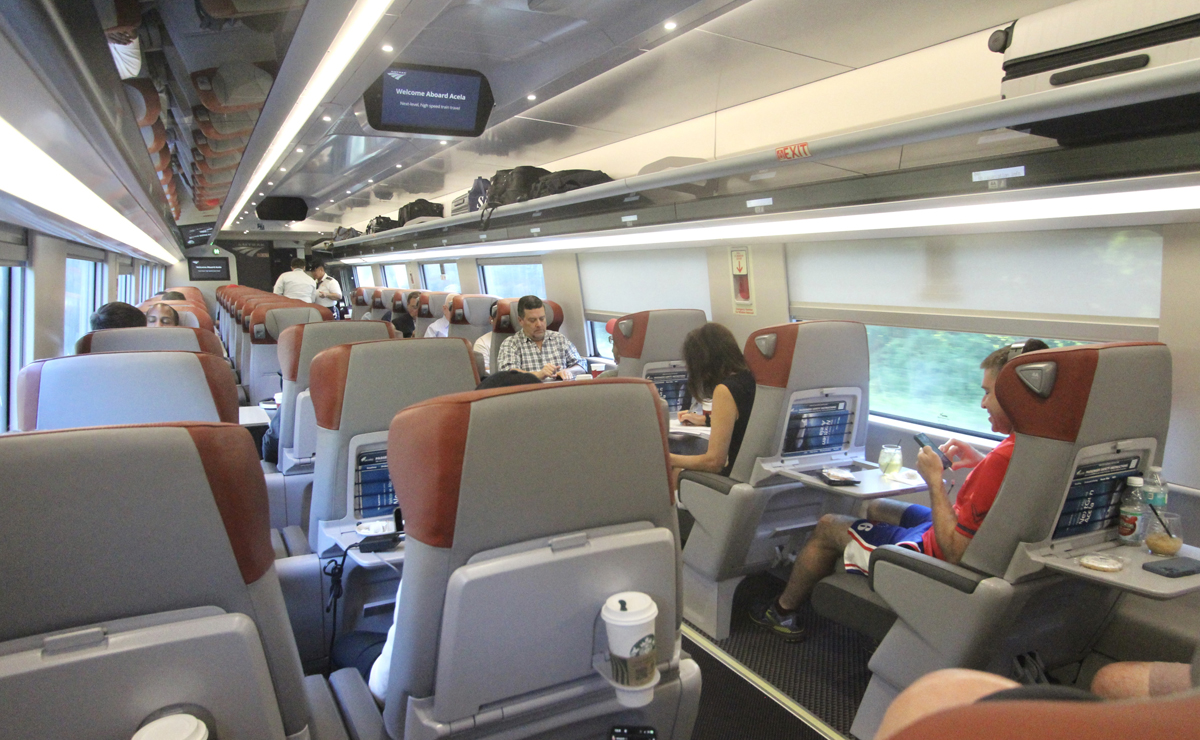
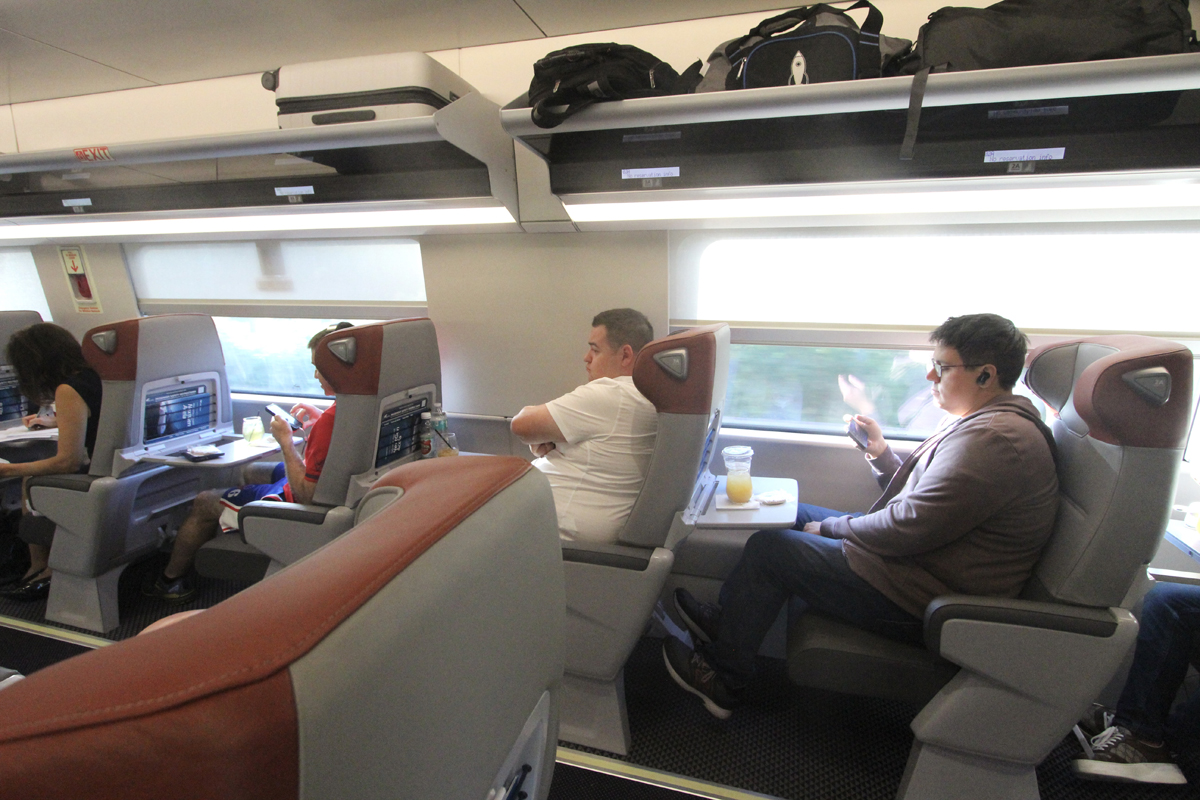
It’s also clear that the equipment has energized Amtrak onboard service staff, proud to preside even though learning how to execute in the new environment must be an adventure. Serving beverages and breakfast to a sold-out house on that Friday morning was efficient and properly orchestrated so passengers destined for Wilmington, Del., and Philadelphia received their meals in time from a first-class galley in the adjacent coach.

Because extensive testing precipitated changes that require retrofitting on already-manufactured trainsets, it is unclear how fast Amtrak will be able to accept more NextGens to take over or add to existing Acela schedules. But as with any new product, more modifications are likely. That’s what happened to the original Acelas, which went through complete fleet withdrawals when problems with defective yaw dampers, brakes, and tilting mechanisms were detected only a few years after they began operating.
— Updated Sept. 5 at 2 p.m. to correct identification of others in photo with former Amtrak CEO Stephen Gardner.
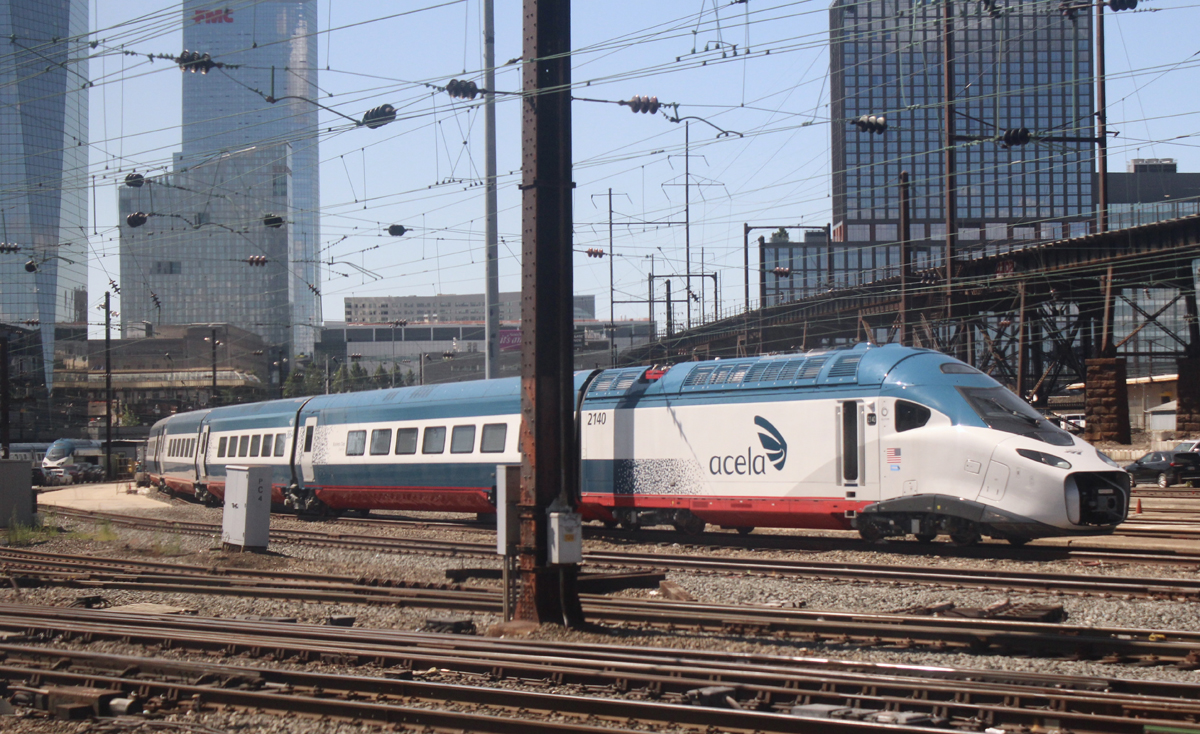






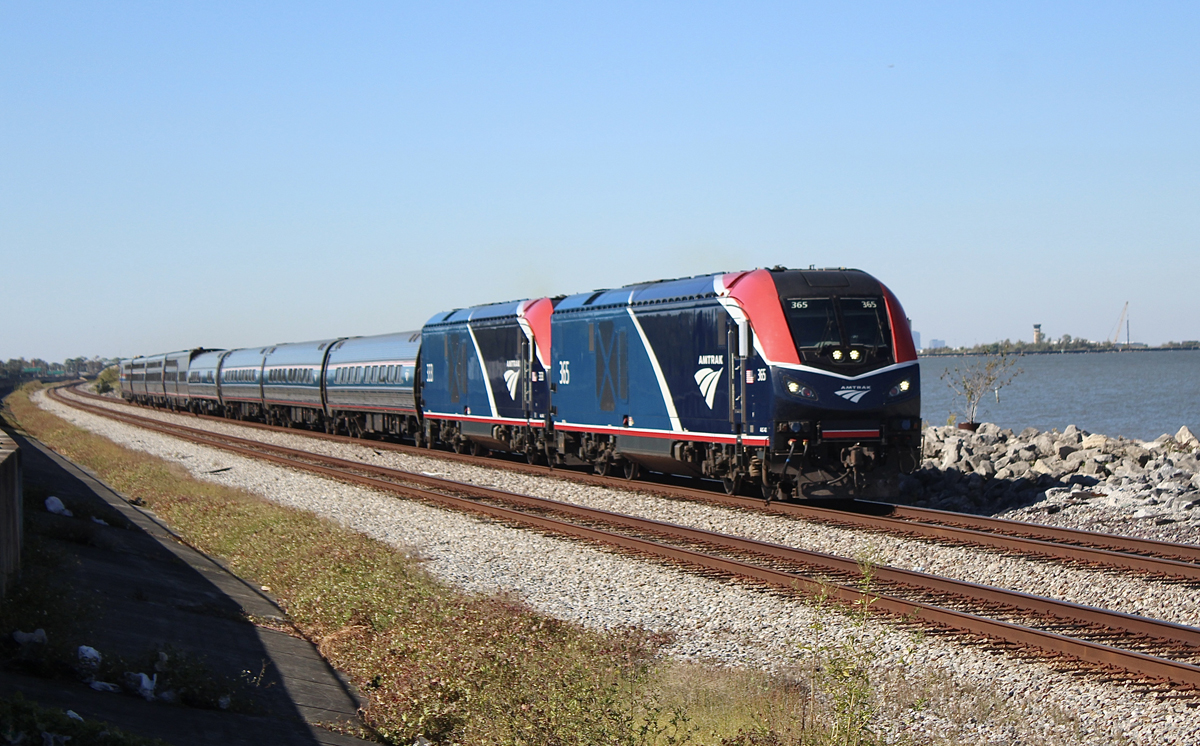
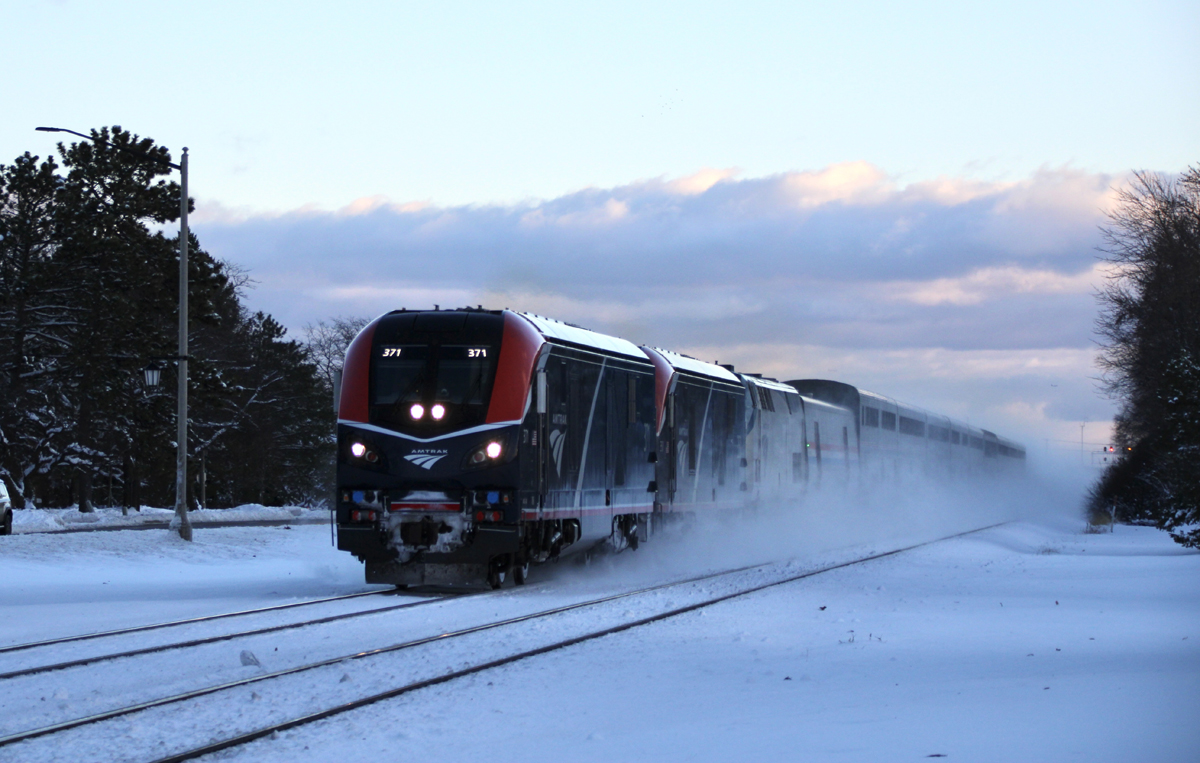
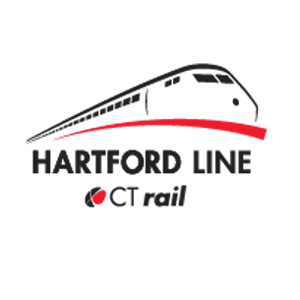
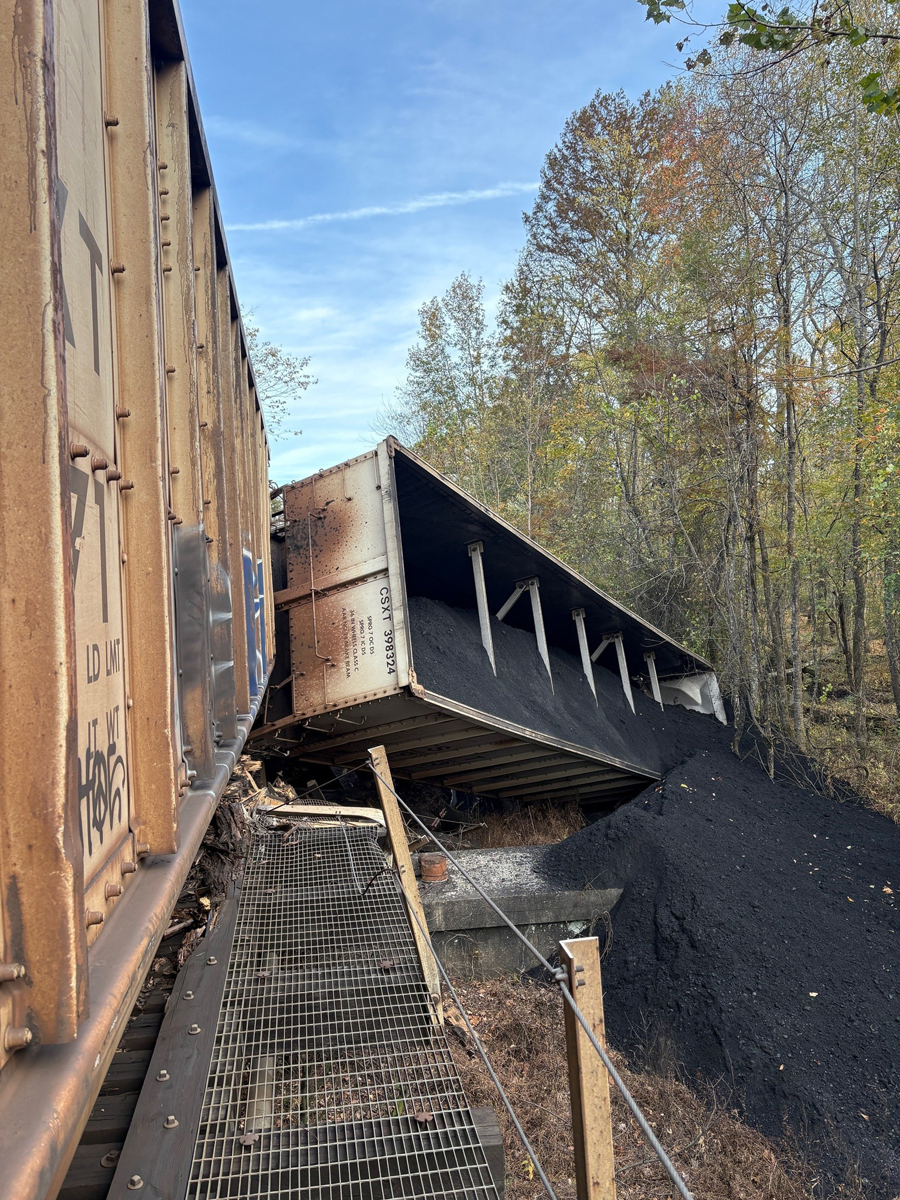
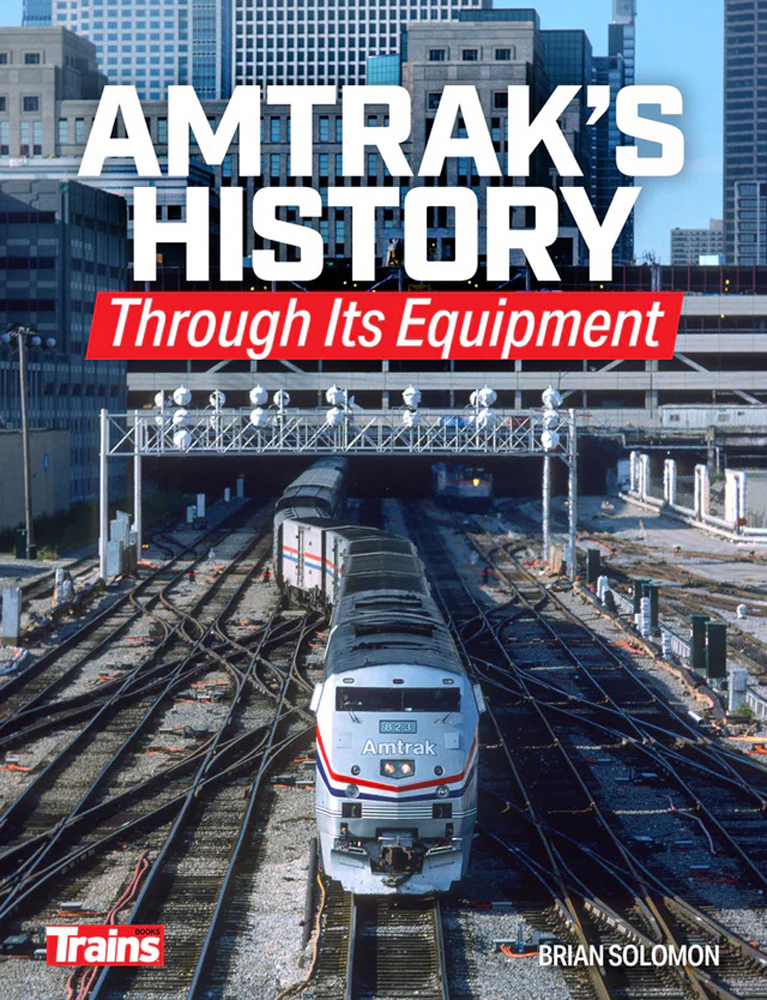
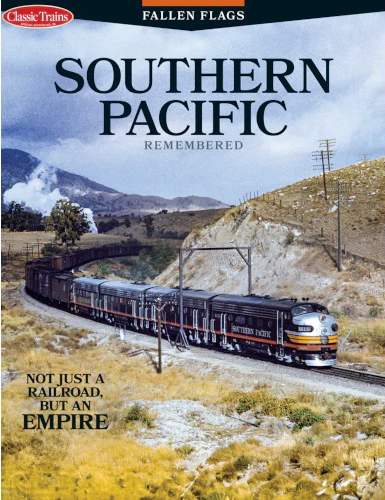
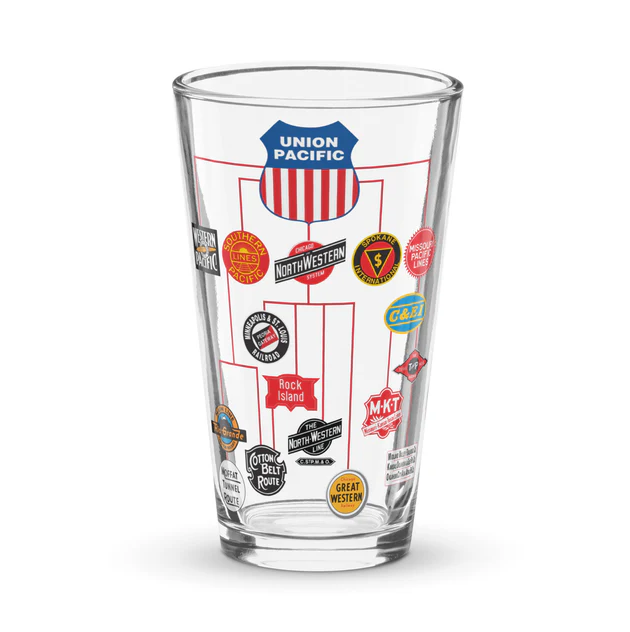
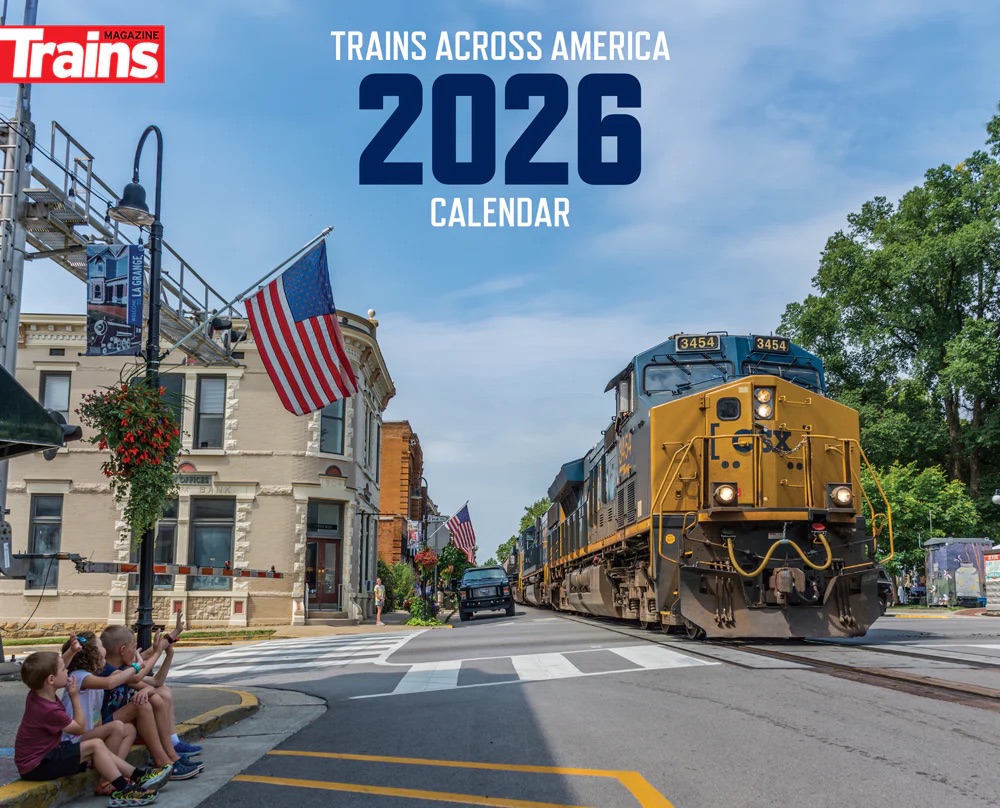
The incompetence displayed in not having USB “C” ports is not defensible. USB “C” ports were introduced in 2014, more than an a decade ago! They have been the standard port system for all devices for years. There is no excuse for not using them and for having the old “A” ports on these trains. The fact that adapters are now provided only in first class is not an acceptable response. All ports must have these adapters immediately and all new trains delivered from here on must have USB “C”, not USB “A” ports.
After reading all the previous comments, I see that most of them cite the problem of the wide posts blocking the view outside. As a regular user of TGVs in France since their introduction in 1981, I can tell my fellow American railfans that these have been a regular fixture on all TGVs. That wall is called a “trumeau” (a space between two windows), hence the name “trumite” for this kind of illness that affects TGVs. Of course, passengers try to avoid them when booking their seat but, as Amtrak appears to be doing, SNCF does not show window and “trumeau” location on its app. Final note: contrary to the NexrGen Acela, its sibling for SNCF, dubbed TGVM, is still not in regular service after years of delay.
Went out of my way to ride Next Gen Acela #2170 at 6:05 on the first day of service August 28th out of Penn to Providence in First Class. My seat was in row 3 in a single seat. There are no windows for row 3 or row 1 in First Class(buyer beware). Stunning that window alignment was an after thought, or no thought or maybe worse, “yeah we know but customers will just get use to it” for the design of these train sets. There is a similar window alignment issue in the Business Class Cars. Reassuring that Amtrak decided to resurrect the railroad mindset of William Henery Vanderbilt, “The public be damned”. There were other negative issues with this specific trip but I will just say I cannot tell you how miserable it was to have a wall as your “view” for 3 hours. Brutally unpleasant. A half baked design.
Hi Bob,
How about giving us the seat lowdown.
In First class and business, what seats are blocked from
window view. Give us the seat numbers to avoid.
The completely windowless seats vary by car. In first class car 1 they are only row 3 (in the photo) and row 1 (single seats at the very back), car 2: row 7; cars 3-5: rows 3 and 5; car 6 is the cafe; cars 7-8: rows 9, 11; Quiet car 9: rows 7, 14. Other seats may have a partial window view that is not that different than window placement on other Amtrak equipment
And note that Amtrak does not show window locations on their app where you can supposedly pick your seat and avoid such situations.
Those poor souls having to tolerate their short commutes with 25 yr old equipment how did they endure such adversity? I’m so happy my/others sacrifice of riding 40 yr old equipment held together with duct tape & crossed fingers enabled them to get the upgrade people of their stature deserve. Kudos also to their culinary tasteful menu for these special class of passengers the rest of us undeserving livestock are just grateful for our Cross Country porridge bowls & coach class microwave sandwiches.
Without doubt, U.S. passenger rail still lags behind Europe and Asia, but this new sleek trainset is a major leap forward.
Dr. Güntürk Üstün
They ought to nickname these Aardvarks because that is just what the power cars (locomotives to normal folk) look like. Short and stubby with a “pig nose” like an Aardvark. If they had little ears poking up they would basically be an exact match. What happened to the aerodynamic faring ahead of the coupler or is that omitted because they don’t have enough of these to not warrant the nice aerodynamic look. Ann Amtrak project all the way. If at first you don’t succeed, just concede and give them crap when they expected functionality, they won’t notice in the long run and will pay whatever you tell them to. USA, the Amtrak way! BRUH!…
The faring probably fell off already! HAHA
Some of points:
(1) Not everyone likes to ride backwards. Doesn’t bother me. Most trains aren’t turned, so on most trains, half the seats are backwards and hopefully most trains have a heavy load factor.
(2) Seat comfort. I seem to be the only one not to have liked the seats in the Horizon fleet (now out of service). Like big overstuffed armchairs, not at all comfortable. The airlines have learned how to make their tiny seats comfortable. No room to move about or to breath but the seats themselves good to sit in.
(3) Safety. Unlike airplanes, tray tables on trains aren’t stowed. In the event of a crash, if there is a tray table or a cafe/ diner table, you’re better off sitting in one of the 50% of seats facing backwards.
(4) Ticket price. What’s there even to say? Fare for First Class is off the charts.
Amtrak and manufacturers do not care what the customers want. They know that in time, we humans will adapt to what ever they give us. Which way the seats face will become a non issue in a years time. The window/wall issue is problem that will never go away. Just checking first class seat today (9/4/25) Acela First Class Boston to Washington is $548. That’s $ 1.24 per mile. I know it doesn’t cover the actual cost of the service, when you add the food, beverage, first class car, lounges at both end stations, it sure doesn’t seem to be that bad of a price. (to me)
If you keep doing things the way you always have, you can’t ne surprised when you get what you have always got! Its the same train with the same amount if customer unput that Amtrak always asks for: NONE. There attitude? If half like it and half don’t, were area 50% success. And their is your commitment to the paying passenger… 50%. They are saying, quitcherbitchin and be glad you got that!
I have no desire to ride Amtrak’s new “Supertrain”. If Amtrak expects me to ride backwards with no window they can stuff it. This is a total disregard for passenger comfort and experience. It doesn’t even save time and the prices are crazy.
BTW – why no mention in the article about the complaints about the seat comfort? That has been mentioned in several trip reports.
Yep I’d not be very happy if I had no window to look out on a train trip. The guy in the photo in car 1 row 3 doesn’t look very happy about it either. And note he’s the only one of the three passengers in the photo not on his phone. And the other two have window seats. Definitely a design flaw in my opinion.
Agreed that the plusses outweigh the negatives, and agree that many issues will be resolved with time and experience. Three items will continue to irritate me, as just another customer out there in the wilderness: 1. I wish that corporate newspeak would revert to plain English. 2. I would not be pleased to pay the fares demanded for this service and have a sidewall to stare at in the place of an expected window. 3. Sorry, fellas, I just can’t get used to half the car riding backwards. Seems to me that reversible seats are not an insurmountable engineering challenge.
They ought to buy a car from a European Passenger Builder, dissect it, compare it to what they have been paying for, and then chuck all their old plans and integrate all the new technology into the new cars and have Alstom (or another builder if necessary) start over. Include a clause in the contract that says everyday they co over completion on time costs them X amount and if they can complete it early, on budget and per the contract specifications, they receive a bonus. I guarantee they will do everything they can, move heaven and earth, to get that bonus no matter what it costs, That is what you get when you demand on time performance per the contract. And if they won’t do it, then give the contract to the next team who will. Future business is the carrot and accepting failure and paying as if nothing can be done about it is why you get things late and equipment that does not perform as specified. Nothing is insurmountable George, Only the will to expect it is needed. And that has been the problem of Amtrak Procurement since the beginning of Amtrak time…